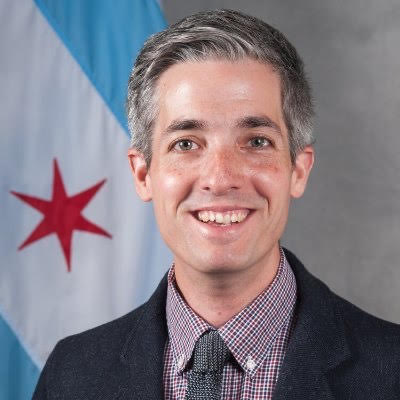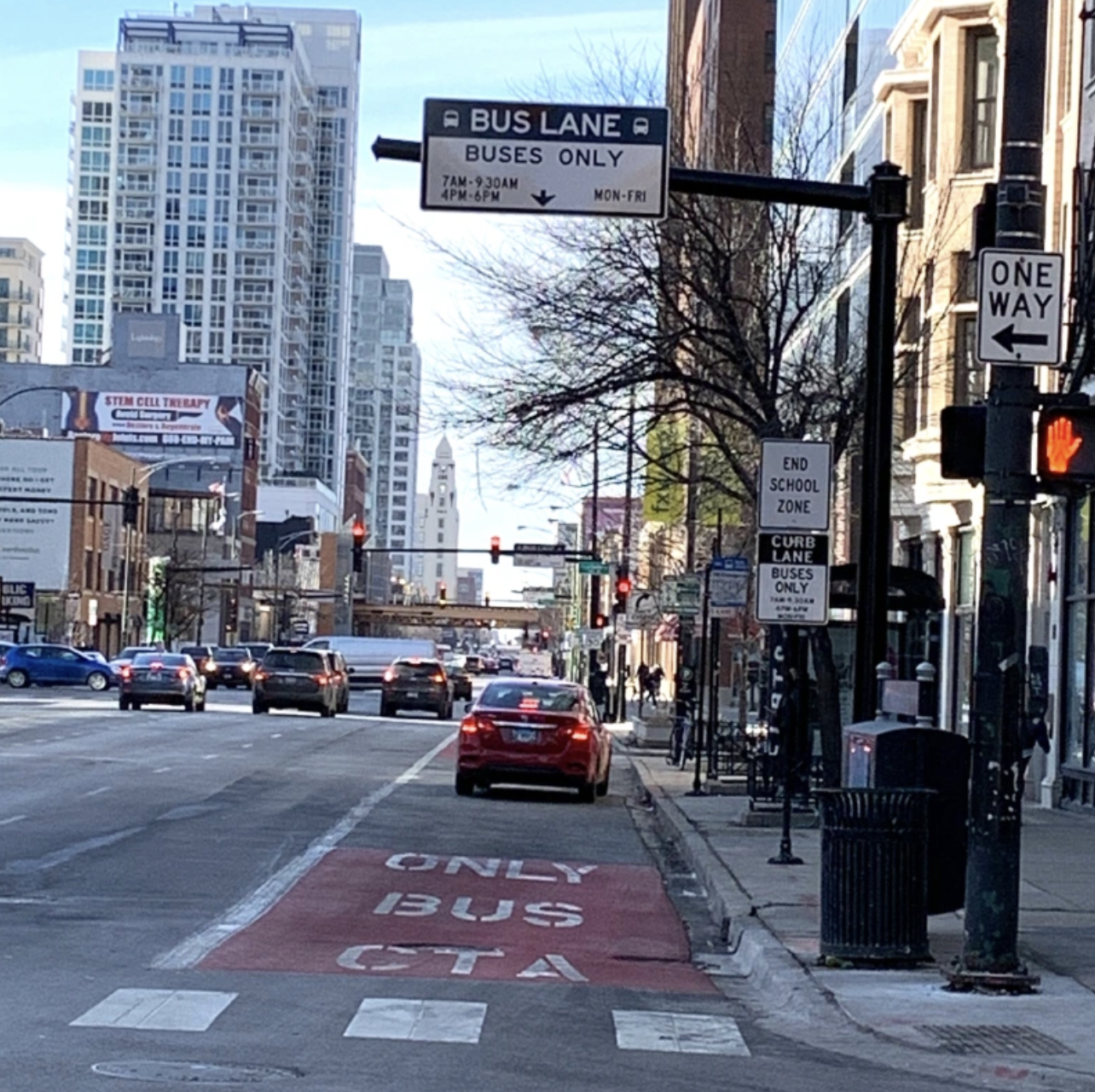Chicago currently lacks a citywide network of well-enforced bus lanes that would allow faster travel for the thousands of residents who rely on buses to get around. However, last month Ald. Daniel La Spata (1st) introduced City Council legislation enabling the installation of cameras on CTA buses that would issue tickets by mail to motorists who illegally park in bus lanes.
La Spata's bill, which was assigned to the Finance Committee and the Committee on Pedestrian and Traffic Safety, would amend the Chicago Municipal Code to add a section about Bus Lane Traffic Enforcement and modify various existing sections concerning automated speed enforcement system violations. In reading over the filing of the bill, I was heartened to see La Spata argue for the changes to the municipal code by pointing to the city's 2022 Climate Action Plan which includes a goal to increase CTA ridership by 20 percent by 2030.
A stated objective of the ordinance is to "strengthen the city's policies of enforcing; bus lane violations, traffic speed violations, red light violations, and other traffic violations that interfere with the development of safe passage for pedestrians and micromobility users, the city can encourage compliance with these policy goals while proper traffic calming infrastructure improvements are planned and implemented."
If the ordinance passes, the city comptroller, a position that reviews the city's budgets for fiscal soundness, would be "authorized to administer citywide municipal code enforcement programs to be conducted by cameras attached to relevant Chicago Transit Authority, Regional Transit Authority, or any other authorized transportation agency vehicle that may legally use a designated bus lane." The comptroller would also be authorized to enter intergovernmental agreement specifically for the purposes of procuring necessary cameras and maintenance of cameras for the enforcement of relevant traffic violations.
I met with the alder to find out more about his proposal.
Courtney Cobbs: What inspired this ordinance?
Daniel La Spata: Well, the bus-only lane on Chicago Avenue from Western to Ashland was created due to a participatory budgeting process in the 1st ward. Many of our constituents want to see that bus-only lane be more effective. Secondly, the ordinance was inspired by my own personal experience as someone who travels primarily by bike and transit. I have been on trips on the #66 Chicago bus, which ostensibly has a bus-only lane for the majority of the route, and it only takes one car to render the bus-only lane ineffective. Creating better and more effective routes of enforcement is essential for this infrastructure to function properly.
CC: What will your proposed ordinance do?
DLS: The goal of the ordinance is to have cameras placed on the buses along routes with bus-only lanes. These cameras can capture drivers parked in or driving in bus-only lanes and using those photographs for tickets by mail.
CC: What has been the reception from your colleagues?
DLS: Overall, favorable. Many of them have bus-only lanes in their wards and they want them to function well. I’ve also heard from some groups about the delicate balance of education, infrastructure, and enforcement. Almost always people know the appropriate use for these lanes. The bus-only lanes on Western Avenue outside my office are replete with red paint and signage, it cannot be more clear what that lane is for. If someone decides to park in these lanes, it’s a blatant disregard.

CC: How does this ordinance work with state law? I’ve been under the impression for years that state law would need to give the green light to camera enforcement on bus-only lanes.
DLS: I was informed by the Chicago Department of Transportation that ticket by mail can occur with parking/standing in a bus-only lane or bus-stop under state law. For tickets by mail for drivers who drive within the lanes, the city would need enabling or clear statutory legislation that allows for moving violations.
[CDOT confirmed this is accurate.]
DLS: We have seen a lot of support from our residents for bus-only lanes. I can see how there would be a lot of interest in that. I’m not sure if the Better Streets for Buses plan would impact more of the 1st ward. I do know the CTA and CDOT are looking at a few different ways to improve bus movement along Ashland in the 1st ward including traffic signal modernization and relocating bus stops. That would likely be the street that I would follow up with them about.
CC: What is the ordinance number so that those who support the ordinance can call or email their alder and urge them to support the ordinance?
DLS: 02022-2063.
CC: What are some of your hopes for transit in Chicago?
DLS: I think we can have the fastest, most affordable, and most equitable public transportation system in the country. Transit should be the first and best choice for the trips people are making in our city. We have a long way to go to get there in terms of updating infrastructure like traffic signals, having the proper number of staff, etc. I’m excited for that! I’ll soon be a father and I look forward to our family using transit to visit all the great attractions our city has to offer.
CC: I couldn’t agree more. This past weekend I traveled from Rogers Park to Logan Square. Transit travel time was an hour and some change. If I had driven it would have been 20 minutes.
DLS: See, as long as we have gaps like that, people will continue to choose to drive. I don’t know the path to this but I really think Ashland and Western should function as [bus rapid transit] lite within the city. We’re not there yet but I can see us getting there within the next four years.
CC: The Chicago Transit Authority used to have a page on their website about BRT on Western.
DLS: Let’s get there! Let’s get there together.





